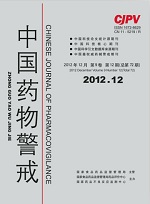|
|
Analysis of the Perioperative Utilization of Antibiotics in Gynecology
WANG Li-hua
2012, 9(12):
760-761.
ObjectiveTo investigate the perioperative utilization of antibiotics in gynecology of our hospital and provide references for the rational use of antimicrobial agents. MethodsWe randomly selected 308 medical records in our hospital from Jun. 2011 to Dec. 2011 and filled out the "surgery with the use of antibacterial agents in questionnaire", which were analyzed and appraised on antibacterial drug selection, use time, combined situation, prevent application, etc. ResultsOf all analytical cases, 308(100%) received antibacterial drugs, which involved in 10 classes and 25 varieties, such as aminoglycoside, cephalosporin, nitrate imidazoles and penicillin. Mono-drug administration, two-drug administration, three-drug administration, four or more-drug administration respectively accounted for 11.04%, 59.42%, 26.94%, 2.60%. The average use time was 8.08 d. ConclusionThe use of antimicrobial agents in gynecology was unreasonable in our hospital, and the duration of treatment was long. We should strengthen the management of antibiotics usage.
References |
Related Articles |
Metrics
|
